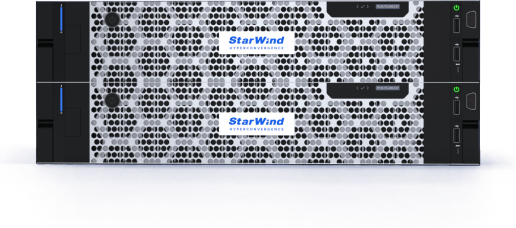Businesses are continuously exploring methods to maximize computing efficiency, cut expenses, and enhance operational flexibility. Traditional IT environments often lead to underutilized hardware, wasting resources and driving up costs.
Virtual machines (VMs) offer an effective solution by enabling software-based simulations of physical computers. With VMs, multiple operating systems can operate concurrently on a single physical system, transforming the way organizations deploy and oversee IT infrastructure.
What is a Virtual Machine?
A virtual machine (VM) is a software-based representation of a physical computer that runs on a host system. It functions within an independent environment, featuring its own virtual CPU, memory, storage, and network components – all powered by the physical hardware underneath. By leveraging VMs, users can operate multiple operating systems and applications on one physical server, effectively creating numerous “computers” within a single machine.
Virtual Machine Components
Whether you’re spinning up a VM on your laptop or in a data center, the following components make it work:
Virtual CPU (vCPU)
Acts as the VM’s processor. It’s mapped to the physical CPU cores or threads on the host. Depending on the hypervisor and workload, multiple vCPUs can be assigned to a single VM.
Virtual Memory (vRAM)
Allocated from the host’s physical RAM. Each VM gets a defined amount of memory, which it uses just like a physical machine would.
Virtual Storage
Usually provided as virtual disks (e.g., VMDK, VHDX, QCOW2 files). These appear to the guest OS as physical hard drives but are stored as files on the host or network-attached storage.
Virtual Network Interface Card (vNIC)
Connects the VM to other machines and networks. The hypervisor creates virtual switches or bridges that handle traffic between VMs and external systems.
Firmware (BIOS/UEFI)
Each VM has a virtual firmware layer that controls boot behavior and basic hardware settings, similar to a real machine’s BIOS or UEFI.
Guest Operating System
The OS installed inside the VM. It can be anything compatible with the VM’s virtual hardware — Windows, Linux, BSD, etc.
VM Tools or Guest Additions
Optional software installed in the guest OS to improve integration with the hypervisor. These provide features like clipboard sharing, time sync, better display support, and improved performance.
How Do Virtual Machines Work?
Virtualization technology underpins VMs, abstracting physical hardware and presenting virtual components to guest operating systems. The hypervisor, or Virtual Machine Monitor (VMM), is central to this process.
A hypervisor manages resource allocation and ensures VMs operate independently within the same physical hardware. It emulates virtual CPUs, memory, storage, and network components, allowing multiple guest OS instances to share resources efficiently.
VM architecture consists of two primary environments:
- Host Environment: The physical system and its operating system.
- Guest Environment: The virtual machine and its assigned operating system.
Types of Virtual Machines
Virtual machines usually fall into two categories: system virtual machines, which replicate full hardware environments, and process virtual machines, which support individual applications. Each serves a different use case and is built on different technologies.
System Virtual Machines
System virtual machines replicate an entire physical machine: CPU, memory, storage, and network, and can run full operating systems. This makes them ideal for hosting servers, running multiple OSes on a single host, or isolating workloads.
They’re managed by a hypervisor, which handles resource allocation and keeps VMs separate. Hypervisors come in two types:
- Type 1 (bare-metal) – Installs directly on physical hardware. Typically used for production workloads and cloud infrastructure.Examples: VMware ESXi, Microsoft Hyper-V (on Server), KVM, Xen
- Type 2 (hosted) – Runs inside an existing OS, like a regular application. Common for development and desktop use.Examples: VMware Workstation, Oracle VirtualBox, Parallels Desktop
Popular system VM platforms (Hypervisors):
- VMware vSphere / ESXi – Widely used for data center virtualization and VM lifecycle management.
- Microsoft Hyper-V – Built into Windows Server and some Windows desktop editions. Also powers Azure VMs.
- KVM (Kernel-based Virtual Machine) – Integrated into Linux; widely used in cloud environments and virtualization platforms like Proxmox and OpenStack.
- Oracle VirtualBox – Free Type 2 hypervisor often used for cross-platform testing or sandboxing.
- Xen / Citrix Hypervisor – Once dominant in cloud platforms, still used in some legacy or performance-sensitive scenarios.
- AWS Firecracker – A microVM manager designed for speed and isolation. Used by AWS Lambda and Fargate to spin up lightweight, fast-launching VMs with minimal overhead.
System VMs give you strong isolation, flexibility in OS choice, and control over system-level features. They’re heavier than containers but are still the go-to for workloads that need a full OS, strong isolation, or compatibility with legacy software.
Process Virtual Machines
A process virtual machine is designed to run a single program in a self-contained environment. It doesn’t simulate hardware — instead, it abstracts OS-level functions so that code can run consistently across different platforms.
These VMs usually interpret or compile intermediate code (like bytecode) and provide a managed runtime with features like memory management, threading, and sandboxing.
Examples:
- Java Virtual Machine (JVM) – Powers Java, Kotlin, Scala apps. Runs bytecode on any OS with a JVM installed.
- .NET CLR (Common Language Runtime) – Runs .NET apps (C#, F#, etc.) across Windows, Linux, and macOS using the cross-platform .NET runtime.
- Android Runtime (ART) – Used by Android to run mobile apps. Provides app-level isolation and resource management.
- JavaScript engines – Embedded in browsers (e.g., Chrome’s V8, Firefox’s SpiderMonkey). Run JavaScript in a sandbox with JIT compilation.
- WebAssembly (Wasm) – A portable binary format for running code compiled from C++, Rust, etc. Runs in browsers or on servers with near-native performance.
Process VMs are key to software portability. They allow apps to run unchanged across systems and architectures, and they’re used everywhere — from mobile apps and web browsers to server runtimes.
Key Use Cases for Virtual Machines
Cloud Computing
VMs are integral to cloud services, enabling providers to deliver scalable, on-demand computing power. Businesses can dynamically adjust infrastructure based on evolving needs without purchasing additional physical hardware.
Software Development & Testing
Developers use VMs to create isolated environments for testing applications across multiple operating systems and configurations. This helps detect compatibility issues while safeguarding primary development environments.
Running Multiple OS and Applications Simultaneously
VMs enable users to run diverse operating systems and applications on a single machine. For instance, Mac users can execute Windows applications, and Windows users can explore Linux distributions without requiring additional hardware. This also allows running legacy applications on newer operating systems or vice versa.
Server Consolidation
By consolidating underutilized servers into fewer physical machines, businesses can optimize hardware usage, reduce data center footprints, and lower energy and cooling expenses.
Disaster Recovery & Backup
VMs streamline disaster recovery by allowing easy backup and replication of entire computing environments. If a physical server fails, a VM can be swiftly relocated to another host, ensuring minimal downtime.
Advantages of Virtual Machines
Resource Optimization: VMs maximize hardware utilization, increasing efficiency from 15-20% in traditional setups to over 80% in virtualized environments. This reduces hardware costs and energy consumption.
Isolation: Each VM operates independently, preventing system failures in one VM from affecting others. VMs can also be configured with advanced security features such as shielded VMs, which protect sensitive data from unauthorized access, even from administrators of the host system
Flexibility & Portability: Entire VM environments can be transferred between physical hosts, simplifying backup, recovery, and scaling operations.
Challenges of Virtual Machines
Performance Overhead: Due to virtualization layers, performance may be lower than running applications directly on hardware, especially for resource-intensive tasks like high-performance computing.
Resource Contention: When multiple VMs share a host, competition for limited resources may impact performance.
Operational Complexity: Managing multiple VMs requires specialized knowledge, increasing administrative overhead.
Licensing Costs: Running different operating systems within VMs can add up in licensing expenses, potentially offsetting hardware savings.
Virtual Machines vs. Containers
Both VMs and containers provide isolation, but they differ in approach:
- VMs virtualize an entire machine, including the OS, providing strong isolation but consuming more resources. VMs are ideal for applications requiring full OS environments and strong isolation, such as running different operating systems or legacy applications.
- Containers virtualize at the OS level, sharing the host kernel while running as separate processes, making them lightweight and faster to deploy.
While containers excel in microservices and scalable deployments, VMs remain essential for running applications requiring full OS environments and strong isolation. Many organizations leverage a hybrid model, running containers within VMs for enhanced flexibility and security.
How to Set Up a Virtual Machine
Setting up a VM involves the following steps:
1. Select a Hypervisor: Choose a solution based on your needs. Beginners can use VirtualBox or VMware Workstation Player, while enterprises may opt for VMware ESXi, Microsoft Hyper-V, or KVM.
2. Check System Requirements
- CPU: Ensure virtualization support (Intel VT-x or AMD-V)
- RAM: At least 8GB recommended (4GB minimum)
- Storage: Minimum 20GB free space
- OS Compatibility: Verify hypervisor and guest OS compatibility
- Enable Virtualization in BIOS/UEFI: Activate virtualization technology in system firmware settings.
3. Install the Hypervisor: Download and install the chosen hypervisor software.
4. Create a New VM:
- Open the hypervisor and initiate a new VM setup
- Assign a name and storage location
- Allocate CPU and memory resources
- Set up a virtual hard disk and network settings
5. Install the Guest Operating System:
- Attach the OS installation media (ISO file or physical disk)
- Boot the VM and follow installation prompts
- Apply necessary updates and drivers
6. Enhance Performance: Install guest tools or additions to enable better graphics, shared folders, and improved integration.
7. Customize Settings: Adjust networking, display, and other configurations to optimize performance.
Once set up, the VM operates like a standard computer, allowing users to install software, create files, and run applications seamlessly.
Final Thoughts
Virtual machines have transformed modern computing by optimizing hardware efficiency, enabling isolated computing environments, and offering unparalleled flexibility in IT management. From consolidating enterprise servers to creating diverse testing environments on personal machines, VMs remain fundamental in IT infrastructure, benefiting businesses, developers, and IT professionals alike.


